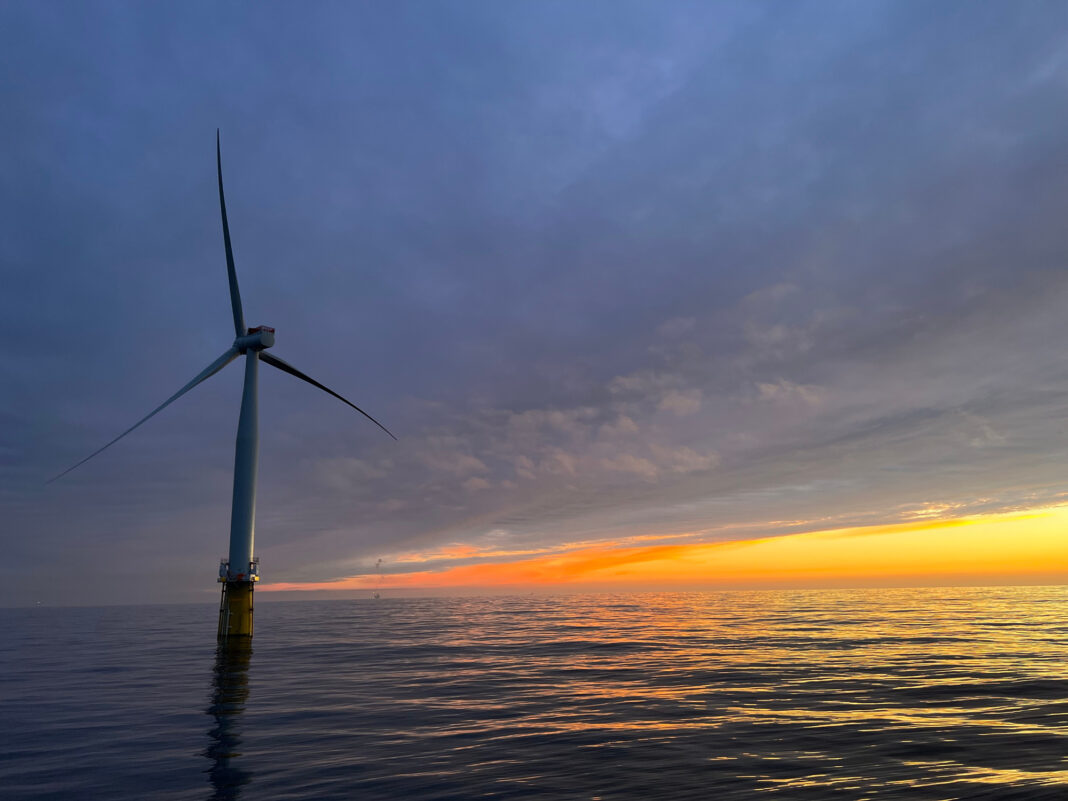Industry leaders in Cornwall say plans to build floating windfarms off the coast could unlock a “green growth revolution” and thousands of jobs – if power is landed directly in Cornwall.
Later this summer The Crown Estate, which manages the seabed around the UK, will invite energy companies to bid for leases to build floating windfarms in the Celtic Sea.
The plan is to unlock 4GW of electricity by 2035, enough for three million homes, with potential for 24GW in the years following. For comparison, Hinkley Point C nuclear power station will be 3.2GW when complete.
But where that power comes ashore is still far from certain. Industry leaders in Cornwall are urging both The Crown Estate and the National Grid to bring at least 2GW ashore in Cornwall by 2030 as part of the first phase of Celtic Sea development, to unlock industries vital to the UK’s transition to net zero.
This includes mining for minerals like lithium, tin and tungsten which the Government has identified as ‘critical’ to safeguarding British industries now and in the future.
These minerals are found in abundance in Cornwall and large parts of the UK economy depend on them, from electric vehicles to medical and defence equipment.
But Cornwall’s existing electricity network is so constrained that it is holding back the development and growth of these industries, and the ability to ‘plug’ more green energy generation into the National Grid.
An estimated 80% of potential renewables projects in Cornwall are having to wait until 2036 for a grid connection because of capacity constraints.
There are serious concerns that Cornwall could miss out if power from the first Celtic Sea turbines all lands in Wales or other parts of the south west. However, a connection into Cornwall could benefit the whole of the south west region.
Mark Duddridge, chair of the Cornwall & Isles of Scilly Local Enterprise Partnership, said: “If you think of the National Grid like your ring main at home, it basically ends in mid-Cornwall. This lack of capacity is holding back industries old and new, threatening to stifle jobs and investment, which is why we need urgent action.
“A direct 2GW connection from the first phase of the Celtic Sea would literally energise our economy and unlock industries that can play a vital role in the UK’s energy transition, creating thousands of jobs. This includes mining critical minerals like lithium and tin, geothermal energy and methane capture, all of which are being pioneered in Cornwall.
“It will decarbonise existing industries by providing an abundance of clean, green electricity and more capacity for local green energy generation. That’s why it’s vital the electricity generated from floating wind makes landfall in Cornwall before the end of this decade, and those decisions are being made now.”
Cornish Lithium is among the Cornish businesses backing calls for a direct Celtic Sea connection. It is a pioneering mineral exploration focused on the environmentally responsible extraction of lithium from geothermal waters and hard rock in the historic mining district of Cornwall.
Founder and CEO Jeremy Wrathall, said: “A floating offshore wind connection to Cornwall will facilitate the use of clean energy from the Celtic Sea to power the industrial processes required to produce battery-grade materials for electric vehicles, at a scale required to support the energy transition as highlighted in the Government’s Critical Minerals Strategy.
“An upgraded transmission system will allow the critical mineral sector in Cornwall to develop more on-site renewable generation as part of a sustainable net zero business. It’s a win-win, but only with the right connection, at the right time, and that time is fast approaching, if not here already.”
Bringing energy ashore in Cornwall from the Celtic Sea would strengthen the National Grid down to its most westerly point (at Indian Queens) and catalyse investment in the wider transmission network, bringing benefits to the entire south west region.
The North Cornwall coast has been identified as the most suitable location for a cable to make land. A new electricity sub-station on Cornwall Council owned land could connect to the National Grid at Indian Queens just a few miles away.
St Austell and Newquay MP Steve Double, is also supporting the bid for Cornwall to have an early Celtic Sea connection.
He said: “Given The Crown Estate’s stated aims of helping to create social and economic value, and to incentivise investment in critical enabling infrastructure, plugging Cornwall directly into the Celtic Sea as part of a first phase of floating windfarms is hopefully a no-brainer. As such it’s also something which the National Grid can also sign up to. The potential benefits are enormous and would be felt far beyond Cornwall’s borders.”
Cornwall Council Leader, Linda Taylor, is also supportive. She added: “We are strategically located for floating offshore wind in the Celtic Sea and are very focussed on the near-term opportunity for electricity to come ashore here in Cornwall. We want to be first and we have technically viable locations to enable this, and an imperative to help deliver the decarbonisation potential that this infrastructure could have for our critical industries and our sustainable future.”
Earlier this week (Apr 19) Cornwall Council announced that almost £1 million has been awarded to Falmouth Docks & Engineering Company, operated by A&P Group, from the Government’s Shared Prosperity Fund for an environmental impact assessment to inform potential redevelopment at the port to support the floating wind sector in the Celtic Sea.
Discussions with The Crown Estate and National Grid are due to take place shortly.








